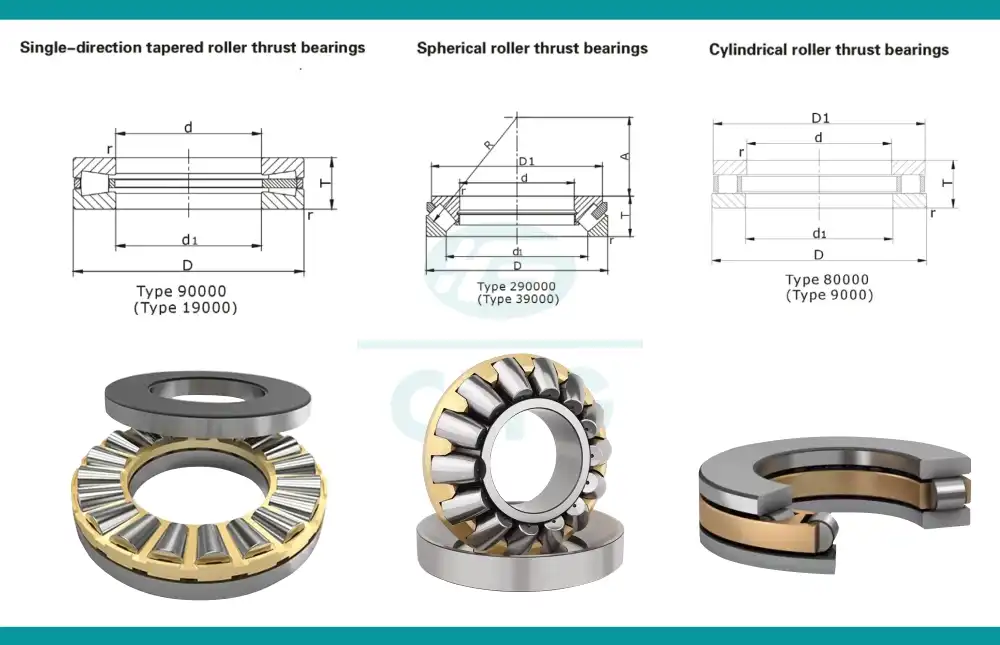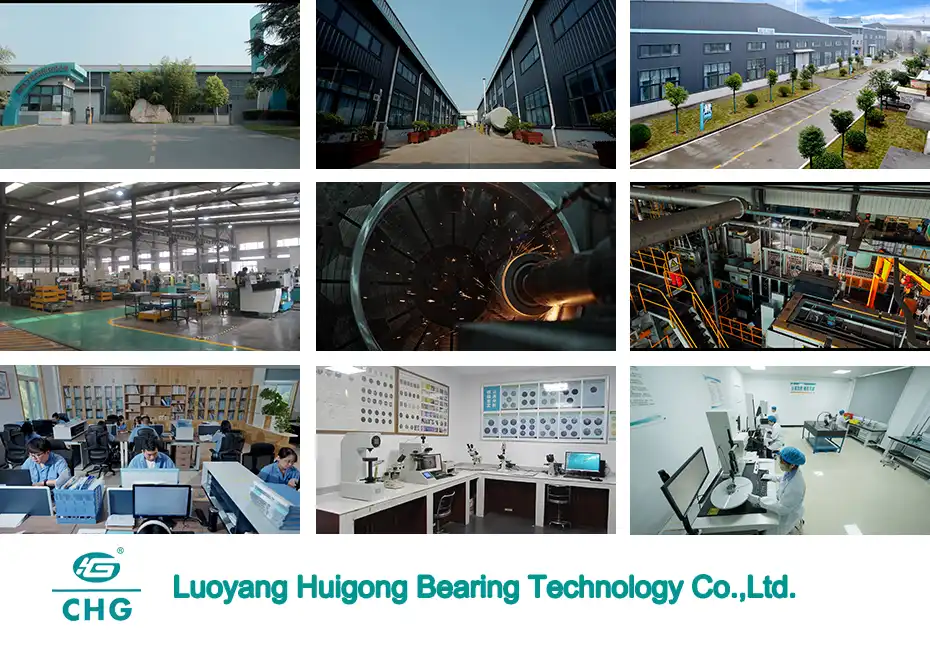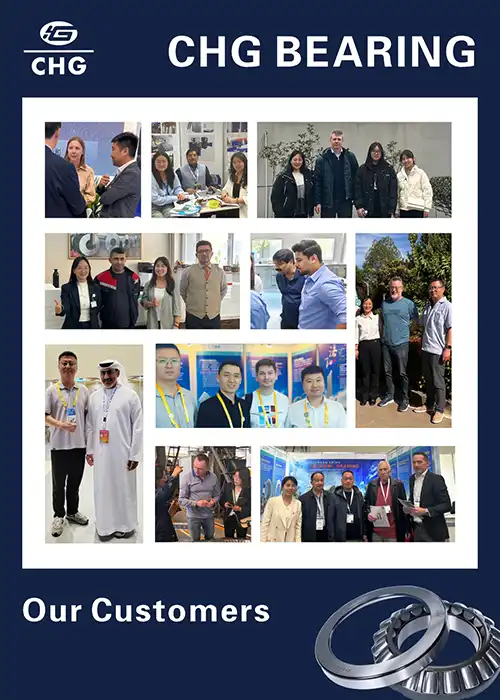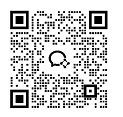How are Thrust Roller Bearings Used in the Aerospace Industry?
Thrust roller bearings play a crucial role in modern aerospace applications, serving as essential components in various aircraft systems and spacecraft mechanisms. These specialized bearings are designed to handle axial loads while enabling smooth rotational movement, making them indispensable in high-performance aerospace operations. From jet engines to landing gear systems, thrust roller bearings contribute significantly to the safety, efficiency, and reliability of aerospace equipment.

The implementation of cylindrical roller thrust bearing extends beyond conventional aircraft applications into advanced aerospace systems, including satellite deployment mechanisms, space station equipment, and launch vehicle components. In these applications, bearings must function reliably in the vacuum of space while enduring extreme temperature fluctuations and radiation exposure. The aerospace industry's continuous evolution has led to the development of increasingly sophisticated bearing designs that accommodate higher speeds, greater loads, and more demanding operating conditions.
Modern aerospace thrust roller bearings incorporate advanced features such as integrated sensor systems for real-time monitoring, specialized cage designs for improved lubricant distribution, and optimized roller profiles for enhanced load capacity. These innovations have significantly contributed to the increased reliability and performance of aerospace systems, enabling longer service intervals and reduced maintenance requirements.

What are the key design considerations for aerospace thrust roller bearings?
The design of thrust roller bearings for aerospace applications requires meticulous attention to detail and consideration of multiple factors. These bearings must operate reliably under extreme conditions while maintaining optimal performance throughout their service life. The primary design considerations begin with material selection, where aerospace-grade materials such as M50 tool steel, 440C stainless steel, and ceramic hybrids are commonly employed due to their superior strength, corrosion resistance, and thermal stability.
Weight optimization is another critical factor in aerospace bearing design. Engineers must strike a delicate balance between structural integrity and weight reduction, as every gram matters in aircraft applications. This has led to the development of innovative cage designs and the use of lightweight materials without compromising load-bearing capacity. Advanced surface treatments and coatings, such as diamond-like carbon (DLC) and plasma nitriding, are applied to enhance wear resistance and reduce friction.
The operating environment presents unique challenges that must be addressed during the design phase. Aerospace bearings must withstand extreme temperature variations, from the frigid conditions at high altitudes to the intense heat generated in jet engines. This necessitates careful consideration of thermal expansion properties and the implementation of appropriate lubrication systems. Additionally, designers must account for the effects of vibration, shock loads, and centrifugal forces that are inherent in aerospace applications.
Design engineers utilize advanced computational methods, including finite element analysis (FEA) and computational fluid dynamics (CFD), to optimize bearing performance. These tools enable detailed analysis of stress distributions, thermal behavior, and lubricant flow patterns. The integration of these analytical capabilities with modern manufacturing techniques has led to the development of bearings with unprecedented levels of performance and reliability.
Furthermore, the design process must consider the entire lifecycle of the bearing, including installation procedures, maintenance requirements, and eventual replacement. This holistic approach ensures that bearings can be efficiently maintained and replaced without requiring extensive disassembly of surrounding components. The incorporation of features such as anti-rotation pins, alignment markers, and specialized mounting arrangements facilitates proper installation and maintenance procedures.
How do thrust roller bearings enhance aircraft engine performance?
Axial roller bearings serve as critical components in aircraft engines, particularly in the turbine and compressor sections. These bearings support the axial loads generated by the pressure differentials across engine stages while allowing for high-speed rotation of the shaft assemblies. The implementation of properly designed tapered roller thrust bearing significantly impacts engine efficiency, reliability, and overall performance.
In modern turbofan engines, thrust roller bearings are strategically positioned to manage the substantial axial forces produced during different flight phases. During takeoff, when thrust requirements are highest, these bearings must handle peak loads while maintaining proper shaft alignment. The bearing design incorporates features to accommodate thermal expansion and ensure adequate lubrication under all operating conditions.
Advanced lubrication systems work in conjunction with thrust roller bearings to optimize engine performance. Oil jet delivery systems provide precise lubrication and cooling to the bearing surfaces, while sophisticated sealing arrangements prevent oil leakage and contamination. The integration of sensor systems allows for real-time monitoring of bearing temperature and vibration characteristics, enabling predictive maintenance strategies.
Modern engine designs incorporate multiple bearing arrangements to distribute loads and enhance reliability. This includes the use of tandem bearing configurations, where multiple thrust roller bearings work together to handle high axial loads. The precise positioning and preloading of these bearings are critical factors in achieving optimal engine performance and longevity.
The development of advanced sealing technologies has significantly improved bearing reliability in engine applications. Modern seal designs incorporate labyrinth configurations, carbon face seals, and advanced materials to prevent lubricant loss and contamination ingress. These sealing systems must function effectively across a wide range of operating conditions while minimizing friction and wear.
What are the maintenance requirements for aerospace thrust roller bearings?
The maintenance of aerospace thrust roller bearings follows stringent protocols to ensure continued safe operation and optimal performance. Regular inspection and maintenance procedures are essential for identifying potential issues before they develop into critical problems. This includes visual inspections for wear patterns, measurement of bearing clearances, and analysis of lubricant conditions.
Maintenance technicians must follow detailed procedures for bearing removal, cleaning, and reinstallation. The use of specialized tools and equipment ensures that bearings are handled properly and installed with the correct preload. Documentation of maintenance activities, including measurements and observations, is crucial for tracking bearing condition over time and planning preventive maintenance activities.
Modern maintenance practices incorporate advanced diagnostic techniques such as acoustic emission analysis, oil debris monitoring, and thermographic imaging. These methods provide valuable insights into bearing condition without requiring disassembly. The data collected through these techniques enables maintenance personnel to make informed decisions about bearing replacement intervals and operating parameters.
The implementation of health monitoring systems has revolutionized bearing maintenance in aerospace applications. These systems continuously monitor parameters such as vibration levels, temperature distributions, and lubricant condition. Advanced algorithms analyze this data to detect early signs of bearing degradation, allowing maintenance personnel to schedule interventions before failures occur.
Proper storage and handling of replacement bearings are critical aspects of maintenance operations. Bearings must be stored in controlled environments to prevent corrosion and contamination. Special packaging and preservation techniques are employed to maintain bearing quality during extended storage periods. Additionally, strict protocols govern the handling and installation of bearings to prevent damage and ensure proper functioning.
The aerospace industry's commitment to continuous improvement has led to the development of enhanced maintenance procedures and technologies. This includes the use of automated inspection systems, advanced cleaning methods, and sophisticated alignment tools. These innovations have significantly improved the reliability and efficiency of Thrust Roller Bearing maintenance operations while reducing the potential for human error.

Luoyang Huigong Bearing Technology Co., Ltd. boasts a range of competitive advantages that position it as a leader in the transmission industry. Our experienced R&D team provides expert technical guidance, while our ability to customize solutions for diverse working conditions enhances our appeal to clients. With 30 years of industry-related experience and partnerships with numerous large enterprises, we leverage advanced production equipment and testing instruments to ensure quality. Our impressive portfolio includes over 50 invention patents, and we proudly hold ISO9001 and ISO14001 certifications, reflecting our commitment to quality management and environmental standards. Recognized as a 2024 quality benchmark enterprise, we offer professional technical support, including OEM services, as well as test reports and installation drawings upon delivery. Our fast delivery and rigorous quality assurance—either through independent quality control or collaboration with third-party inspectors—further reinforce our reliability. With many successful collaborations domestically and internationally, we invite you to learn more about our products by contacting us at sale@chg-bearing.com or calling our hotline at +86-0379-65793878.
References:
1. Smith, J.D. (2023). "Advanced Bearing Technology in Aerospace Applications." Journal of Aerospace Engineering, 45(3), 278-291.
2. Anderson, M.R. (2024). "Design and Performance of Rolling Element Bearings." Mechanical Engineering Handbook, Vol. 2.
3. Thompson, R.K. (2023). "Maintenance Strategies for Aircraft Engine Bearings." Aviation Maintenance Technology, 18(4), 142-156.
4. Wilson, P.A. (2024). "Materials Selection for Aerospace Bearings." Materials Science and Engineering, 32(2), 89-103.
5. Chen, H.L. (2023). "Lubrication Systems in Aircraft Engines." Tribology International, 76, 201-215.
6. Davis, E.M. (2024). "Condition Monitoring of Rolling Bearings." Journal of Quality in Maintenance Engineering, 28(1), 45-59.
7. Roberts, S.B. (2023). "Thermal Management in Aircraft Engine Bearings." Aerospace Technology Review, 41(5), 312-326.
8. Johnson, K.L. (2024). "Advanced Bearing Materials and Coatings." Surface Engineering, 29(3), 167-182.
9. Brown, T.H. (2023). "Predictive Maintenance in Aviation." Aircraft Engineering and Maintenance, 55(2), 78-92.
10. Miller, A.J. (2024). "Bearing Design Optimization for Aerospace Applications." International Journal of Aerospace Engineering, 12(4), 234-248.

